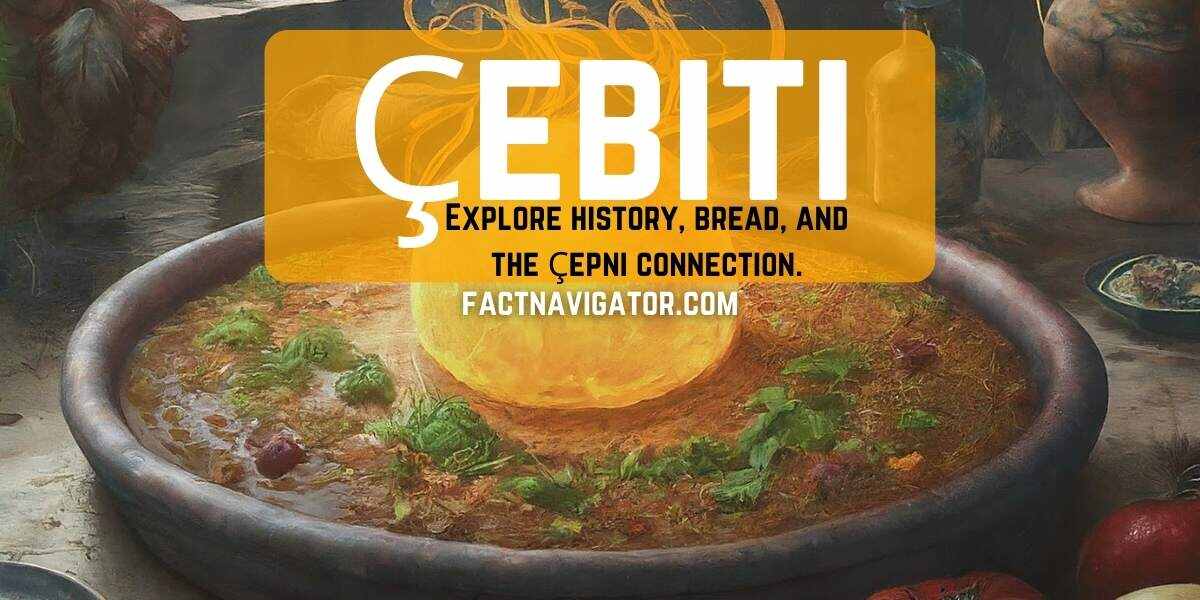Çebiti: Mystery Food of the Oghuz Turks

Deep within the annals of Turkic history lies the legacy of the Çepni, one of the 24 legendary tribes of the Oghuz Turks. These nomadic people played a pivotal role in shaping Central Asia and beyond, leaving behind a heritage that potentially extends into the culinary world through a food item known as “Çebiti”.
The Çepni were renowned for their independent spirit and fierce warrior traditions. Historical sources suggest they inhabited areas that now include modern-day Turkey, the Balkans, and other parts of the former Ottoman Empire. While we cannot definitively describe Çebiti as a specific dish, this word holds a tantalizing promise of a culinary connection to these fascinating people.
This mysterious link between the “Çebiti” name and the tribe’s legacy presents a unique opportunity to delve into the intersection of history and food. Was Çebiti a simple flatbread that sustained the nomads, or perhaps a more elaborate dish that graced their celebrations? The answers may lie in exploring Turkish culinary traditions, investigating regional dialects, and unearthing potential historical recipes.
1. The Çepni Tribe: History & Legacy
To understand the potential significance of “Çebiti” as a food, we need to dive into the world of the Çepni tribe, whose legacy is woven into the tapestry of Turkic history.
Oghuz Origins: Ancient Roots of Turkic Power
The Çepni were one of the 24 major branches of the Oghuz Turks, a vast confederation of nomadic tribes that emerged from the steppes of Central Asia. Renowned for their exceptional equestrian skills and warfare tactics, the Oghuz Turks played a pivotal role in shaping the history of the region. Their migrations and conquests brought them into contact with diverse cultures, giving rise to powerful empires like the Seljuks and the Ottomans.
The Çepni Legacy: Spirit of Independence
Historical records portray the Çepni as fiercely independent and resolute people, often described as spirited and courageous warriors. They were known to inhabit various regions throughout history, with concentrations in what is now modern-day Turkey, parts of the Balkans, and territories once held by the Ottoman Empire.
The Çepni tribe’s legacy likely extends into the rich tapestry of Turkish culture. Their nomadic traditions may have influenced aspects of regional cuisines, and the name “Çebiti” could hold clues to these culinary connections.
2. Çebiti as a Culinary Connection
The link between the Çepni tribe and the mysterious food item “Çebiti” holds a tantalizing culinary potential. To unravel this mystery, we must consider the nomadic lifestyle of the Oghuz Turks and its influence on their food traditions.
The Bread of the Nomads: Nourishment on the Move
Bread has been a cornerstone of nomadic diets for centuries, offering a portable and versatile source of sustenance. If “Çebiti” is indeed a food, it’s highly probable that it was a type of flatbread. Nomadic life demanded practicality – flatbreads could be made with simple ingredients, cooked quickly over open fires, and easily carried during the tribe’s migrations.
Regional Variations: A Legacy of Diverse Flavors
As the Çepni people moved across vast territories, their food traditions likely evolved to incorporate locally available ingredients and techniques. If Çebiti exists, one can speculate that there would be significant regional variations across areas the Çepni inhabited. Perhaps it took on different shapes, textures, or even flavors depending on the location.
Potential Modern Connections: Echoes of the Past
The rich culinary landscape of Turkey offers a wealth of regional flatbreads that could potentially be distant descendants of a historical Çebiti. Examples like bazlama (a thick, fluffy flatbread) or yufka (thin, unleavened sheets of dough) could hold clues to the Çepni’s preparation or form. Exploring the local cuisines of areas where the Çepni historically resided might hold the key to uncovering this culinary link to the past.
3. How to Explore the Çebiti Legacy
The search for Çebiti isn’t simply about finding a definitive answer; it’s an invitation to embark on a fascinating journey through history, cuisine, and language. Here’s how you can become an active participant in uncovering the potential culinary legacy of the Çepni:
Recipes & Regional Cuisines: A Hands-On Culinary Exploration
Dive into the world of Turkish flatbreads! Research recipes for traditional favorites like bazlama, yufka, and other regional specialties. Pay attention to ingredients, techniques, and even the names of these breads – there might be subtle similarities or clues that hint at a connection to Çebiti. Experiment in your own kitchen, comparing different textures and flavors to imagine what a historically inspired Çebiti might have been like.
Travel & Discovery: Seek Knowledge at the Source
If you have the opportunity, plan a trip to regions in Turkey where the Çepni tribe had a strong historical presence. Seek out local markets and small villages, engaging with bakers and elders who are custodians of traditional culinary knowledge passed down through generations. Inquire about local bread specialties, their history, and any potential connection to the region’s nomadic past.
Linguistic Investigation: Deciphering Dialects
The word “Çebiti” itself could hold the key. Explore regional Turkish dialects, especially those from areas with historical Çepni connections. Investigate if there are variations of the word “Çebiti” or other similar-sounding terms that relate to bread, baking techniques, or food in general. Even small linguistic discoveries can shed light on the possible culinary significance of “Çebiti”.
Also Read: SpicyRranny: Unleash Exotic Flavors In Your Kitchen
4. Conclusion
The word “Çebiti” whispers of a potential culinary legacy intertwined with the rich tapestry of Turkic history. While we may not have a definitive recipe, the connection to the Çepni tribe opens a fascinating window into the past. It’s possible that Çebiti was a simple flatbread that nourished nomads, or perhaps something more elaborate, gracing special occasions within the tribe. Unraveling this mystery invites us to appreciate the profound connection between food and cultural history.
Preserving culinary heritage is not just about saving recipes; it’s about honoring the traditions, knowledge, and stories that shape our identities. The search for Çebiti, even if it doesn’t yield a single, tangible dish, reminds us of the value of honoring the food traditions of our ancestors.
This journey of discovery is far from over. I invite you to continue investigating, sharing your findings, and keeping the conversation alive. Let’s work together to uncover the culinary secrets that may be hidden in the word “Çebiti”. Perhaps through collaborative research, culinary exploration, and a keen eye for history, we can illuminate another vibrant thread in the culinary and cultural legacy of the Oghuz Turks.






